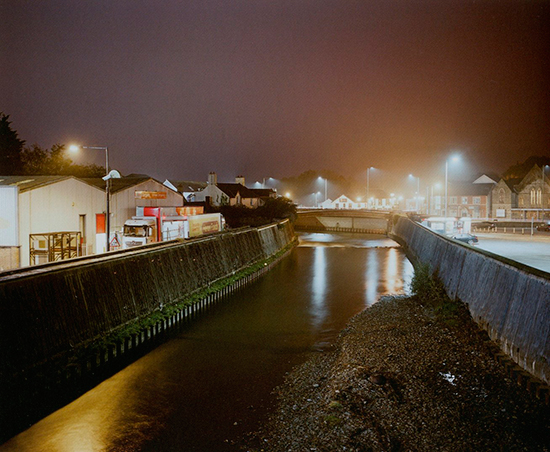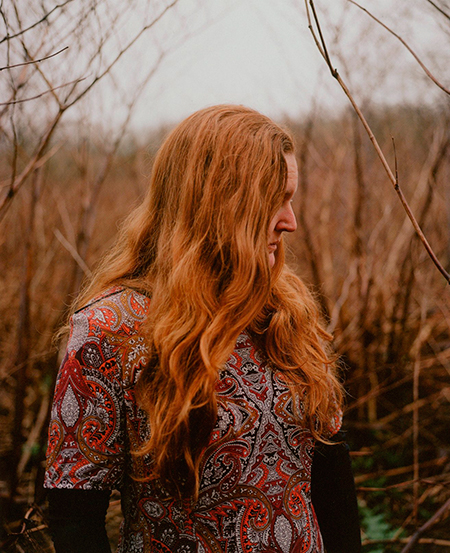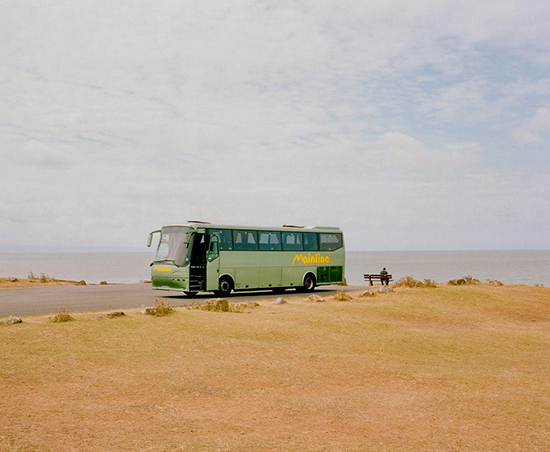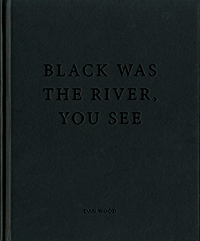| SIMON DENISON IMAGE & TEXT |
| PREVIOUS | NEXT |
BLACK WAS THE RIVER, YOU SEE Dan Wood Kozo Books, 2021 ISBN 978-1-9161379-6-7 Hb
This is a book about a river but also about a place and the people who live in it, and how the residues of a damaged past can still linger in the present, however much time has passed to wash them away. The focus is the Ogmore in South Wales, a short and ‘unremarkable’ river, as Dan Wood calls it, which flows south to reach the Bristol Channel near Bridgend. At the height of the region’s industrialised past, the river ran black with coal dust, like many others in the area. Since most of the local coal mines closed a generation ago, the river is now much cleaner. Fish have returned. But the river is still far from clean. The book’s title frames the work as a story of gross historic environmental damage and partial recovery, but the images seem to invite us to reflect more broadly on the long-term impacts of industrialisation on a region and its inhabitants after many of the original major industries have closed down. Like several photographers before him (Davies, Southam, Soth and others), Wood uses a river as a linking thread for a set of observations on the surrounding region as a whole, including rural and urban vistas, exteriors and interiors of domestic and commercial buildings, portraits of local people, diverse curiosities encountered en route, and various stray finds. There are many pictures of the river, and many where the river is an absent presence, sensed but not seen. What kind of a world are we being shown? For Wood himself, a lifelong inhabitant of the area, it is home territory. In his endnotes, he writes of a childhood spent almost constantly by the river. During recent Covid lockdowns, he says the river has been a place of sanctuary and escape in a time of fear. He describes the book as an opportunity to pay tribute to the river, to show his appreciation. One grandfather was a miner in the neighbouring Rhondda, and Wood recalls the ‘hardship and oppression of working for the greedy pit owners’ across the region. The work was thus evidently made in a spirit of great love and devotion to the Ogmore valley, but with a memory of anger at what the place and its inhabitants have endured. For a reader lacking such personal connections to the work or the area, the images are suggestive but tell a complex, ambiguous, and sometimes impenetrable story. There are no titles or captions to individual pictures, so ambiguities multiply, and silences often lie heavily over the work. A few suggest the kind of carefree pleasure that might be possible by a river: a boy in trunks jumps off an old stone bridge into the water, and in another image, a different swimmer stands waist-high in what seems like an idyllic swimming-hole. In one picture made in the hills, a scarlet garage door blazes in sunlight, amid an assemblage of differently shaped and weathered doors and roofs. It seems like an image made for the joy of the sight itself, a street photographer’s seizing of a fleeting chance arrangement of colour, shape and light. Most of the images are quiet, avoiding event; and several have a calming quality, as though offered as moments of temporary refuge from a world of activity that is never far away: a skip full of builder’s sand in a rural graveyard, or the quiet underside of a flyover by the river’s edge with tyre tracks in the dust. Many pictures, however, hint at a more unsettling narrative of unchecked decay and mysterious abandonment: a white soft-top sports car growing mould between two damp-looking concrete garages; a broken window with a neat pile of logs lying outside and a dead bird; an emptied-out room, with tatty frosted-glass door, bare light bulb and a small pile of reference books on a chair. We might hunt for explanations for these images but none is offered; as if we are seeing a world operating in response to forces that are both unknowable and out of our control. Several images seem oppressive, even menacing: the tangled stems of a tree looming up over the picture frame with a high, dark stone wall behind; a thicket of scrub strewn with bits of discarded scrap; a black sack, contents unknown, impaled on a set of rusty railings. The river is depicted as it passes through Bridgend, hemmed in by concrete embankments, flowing past small-industrial units and carparks. This is a manifestly working class world, a functioning economy perhaps but one with few, if any, signs of money spent on public amenities or private comforts. A picture of a lone Harley parked outside a block of flats stands apart from the rest and lifts the spirits a little: it seems to offer the promise of an afternoon’s escape, a chance to lean into the bends on the A-roads that wind sinuously out of the valley and up into the hills. The book includes several portraits. We are not told names, or any information about the lives of the people depicted. Some look with blank or severe expressions at the camera, others look away, wrapped in their interior worlds, withdrawn and unreachable. Several appear vaguely troubled, even angry. A thick-set man in wellingtons stands in the flooded basement of a commercial building, staring out of the picture with palpable annoyance. A women turns aside, almost completely concealing her face behind a curtain of long red hair, as though refusing any possibility of engagement. If the portraits suggest anything, it is that life is difficult, and relationships too. The final image in the book depicts an empty bus, doors open, parked at the edge of the sea. The driver sits on a bench gazing out towards the horizon. It is a contemplative image about contemplation; immersive and peaceful. The image suggests recovery of a sort, even if it is only for the duration of the looking. You might think that this represents journey’s end, for the bus, the river, the book. But before long the driver will get back in the bus, just as the river never stops running towards the sea. |
 |
|---|---|
 |
|
 |
|
 |
|